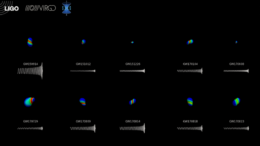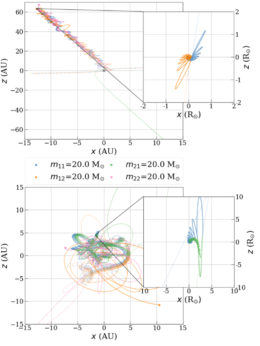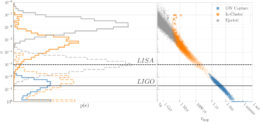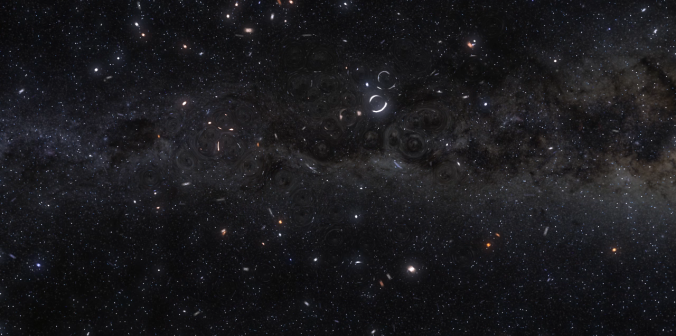The dense, chaotic centers of star clusters may be a birthplace for binary pairs of black holes like those observed by the Laser Interferometer Gravitational-Wave Observatory (LIGO). A new study now explores how eccentric binaries might arise and merge in these extreme environments.
A Question of Origin

The ten black-hole mergers detected thus far by LIGO/Virgo. Click to enlarge. [Teresita Ramirez/Geoffrey Lovelace/SXS Collaboration/LIGO-Virgo Collaboration]
Though the gravitational-wave signals provide a wealth of information about the pre-merger binaries, we haven’t yet been able to determine how these black-hole binaries formed in the first place. Did these pairs evolve in isolation? Or were they born from interactions in the dense centers of star clusters?
One overlooked piece of data might shed light on these questions in the future: eccentricity. Since black-hole binaries in isolation take a long time to merge, any initial eccentricity in the orbit will be damped by gravitational-wave emission by the time the merger happens. But what if the binary doesn’t evolve in isolation? Could we see an imprint of eccentricity on the gravitational-wave signal then?
A new study led by scientist Michael Zevin (Northwestern University and CIERA) explores one possible channel for eccentric mergers: chaotic interactions between multiple black-hole binaries in the centers of star clusters.

Two examples of the complex evolution of binary–binary encounters, both eventually leading to a gravitational-wave capture. An animation of the second example is shown in the video at the end of the post. [Adapted from Zevin et al. 2019]
Complex Interactions
Zevin and collaborators use models to explore what happens during strong interactions between pairs of black-hole binaries and between black-hole binaries and single black holes.
These interactions are incredibly complex (don’t believe me? Check out the video below!). Systems with more than two bodies evolve chaotically, with small changes in initial conditions leading to vastly different outcomes. To make matters worse, simple Newtonian physics won’t accurately describe these systems; to capture the effects of gravitational-wave dissipation, we must model these interactions taking general relativity into account.
Zevin and collaborators find that these complexities lead to surprising results. Though binary–binary interactions occur 10–100 times less frequently than binary–single interactions in the centers of globular clusters, the long life and complexity of binary–binary interactions means that they are significantly more likely to result in a gravitational-wave capture — the rapid inspiral and merger of a binary pair, which occurs quickly enough that the pair may still have measurable eccentricity at merger time.
An Eccentric Result

Predicted eccentricity distributions and delay times for three populations of binary–binary produced gravitational-wave mergers. The horizontal black lines show minimum measurable eccentricities predicted for LIGO/Virgo and LISA. Solid colored lines show the eccentricities for the three populations at 10 Hz (LIGO/Virgo’s lower limit) and 0.1 Hz (the most sensitive frequency predicted for LISA). [Zevin et al. 2019]
The outlook is promising! Gravitational-wave captures generally have eccentricities at merger that should be measurable by LIGO/Virgo, and binary–binary-produced mergers that occur later, either in-cluster or after being ejected from the cluster, could have eccentricities detectable by the future Laser Interferometer Space Antenna (LISA). With enough observations, eccentric binaries may soon help us better understand the origin of black-hole pairs.
Bonus
This video (click here for a larger version) of one of the authors’ binary–binary encounters follows complicated and chaotic interactions over the span of ~25 years, leading to an eventual gravitational-wave capture.
Citation
“Eccentric Black Hole Mergers in Dense Star Clusters: The Role of Binary–Binary Encounters,” Michael Zevin et al 2019 ApJ 871 91. doi:10.3847/1538-4357/aaf6ec
